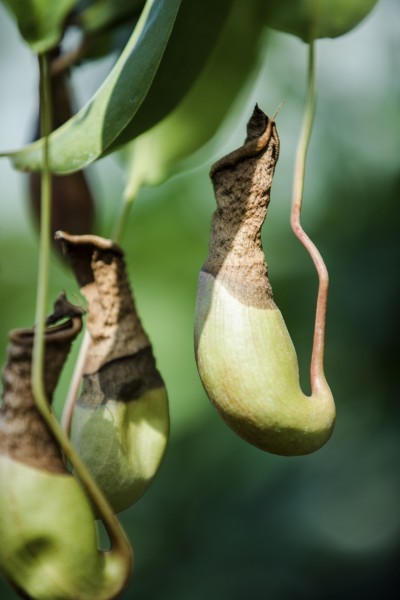
Pitcher plants are exotic, fascinating plants, but they’re prone to many of the same problems that affect any other plant, including pests. If you’re wondering how to get rid of bugs on carnivorous plants, keep in mind that pitcher plant pest control can be tricky. Read on to find out why.
Pests of Pitcher Plants
Common pitcher plant problems include pests; and if you’re dealing with pitcher plant pests, you have a challenge on your hands. For example, beneficial insects that help control pests on most plants aren’t always very helpful. Why? Because the pitcher plant may dine on the helpful bugs!
If that’s not bad enough, pitcher plants are sensitive to chemicals. Even non-toxic insecticidal soap spray may damage (or kill) pitcher plants.
So, how to get rid of bugs on carnivorous plants? Unless you really know what you’re doing, it’s best to remove pests manually. Here are a few of the most common offenders, along with some possible solutions:
- Mealybugs – Mealybugs are tiny, sap-sucking insects with a waxy, cottony coating. They usually gather at the joints of stems and leaves. A cotton swab dipped in rubbing alcohol is often an effective solution. Alternatively, you can remove the pests with a toothpick.
- Caterpillars – Larval moths and butterflies are big and it’s hard to miss the ragged, chewed holes in the leaves. This one is easy – just pick the caterpillar pests off the plant and drop them in a bucket of soapy water.
- Fungal gnats – Tiny flying gnats are often a problem for pitcher plants grown indoors. Although they are tremendous nuisances, fungus gnats usually aren’t harmful and, in fact, provide a healthy snack for the plants. However, it’s good to keep the pests in check because serious damage may result when the pitcher plant pests lay eggs in the soil. Many gardeners find that a thin layer of coarse horticultural sand over the surface of the potting soil discourages egg laying.
- Slugs and snails – These slimy pests are the bane of outdoor plants, and pitcher plants are no exception. There are numerous ways to control slugs and snails, and you may need to experiment to determine which methods work best for you. For example, limit mulch, which provides a handy hiding place. Similarly, keep the area free of leaves and other debris. You may have good luck with a non-toxic slug bait, or a beer trap. It may be unpleasant and time consuming, but picking the pests off the plants by hand is a good way to go. Pick the slugs in evening or early morning (Tips: Use a flashlight. Wear gloves!).
- Thrips – Tiny thrips are hard to see, but they create havoc when they suck the juices from pitcher plants. The leaves often become dry and crisp, and you may notice tiny, sticky black spots. Some gardeners have good luck with systemic insecticides, but again, use chemicals with extreme care. Sticky traps are one non-toxic option.
- Scale – Another sap-sucking insect, scale is a tiny pest that hides under a hard, waxy shell. The shells are relatively easy to scrape off with a toothpick or soft toothbrush.
- Aphids – You might think pitcher plant would turn tiny green aphids into a hearty lunch, but aphids are apparently not attracted to the plentiful pests. Neem oil may be effective, but use the substance with caution. Some gardeners prefer pyrethrum-based insecticides, although others report that the substance killed their plant. The best recourse may be to simply squish the pests or pick them off with tweezers.
Keep in mind that unhealthy plants are more prone to insect attacks. Water and fertilizer properly and make sure your plant has adequate sunlight and air circulation.






